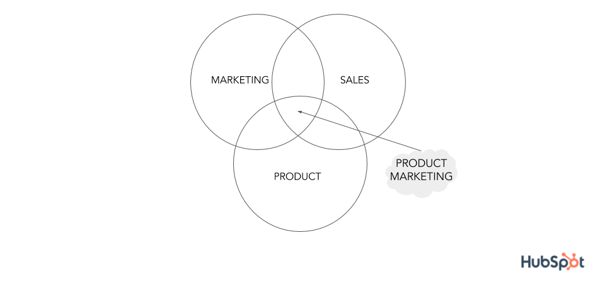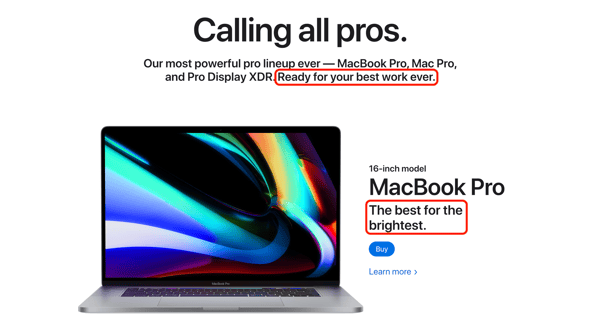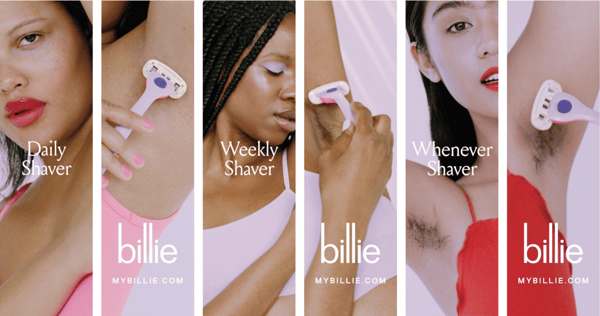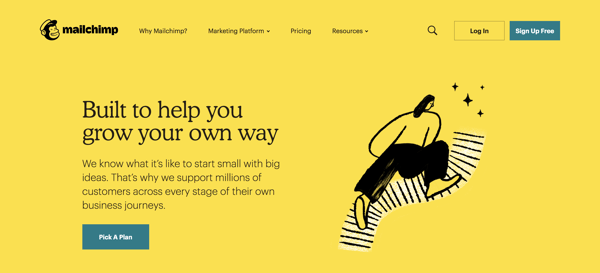During the 1950s, Volkswagen offered a bus. The bus remains an icon for the automobile company decades afterwards, although now considered a vehicle.
The cool part? Volkswagen announced their brand new VW Bus — it’s electrical and characteristics sleek, modern styling. Volkswagen’so advertising for the automobile is eye-catching, quirky, and fun, and it matches the original “hippie” vibe the company was formerly known for.

Volkswagen also released a TV commercial for its bus which ’therefore clever, minimalist, and on-brand. It presents the brand new automobile with the song The Sound of Silence playing at the background (hint: electric cars are silent) and finishes with a short message on the screen for viewers to read: “Introducing a new age of electric driving. ”
This opinion touches on the fact Volkswagen is contributing to rsquo & society;s curiosity about , vehicles that are eco-friendly that are electrical. In addition, it relates to the being a brand new age for the bus.
Who works on this sort of advertising? Who helps create content which excites customers about new and updated products, such as the Volkswagen bus? Who encourages consumers to purchase? Product entrepreneurs.
What makes product marketing exceptional? How is it distinct from conventional advertising? Let us unpack the gaps.
Product Marketing vs. Conventional Marketing
Whereas marketing is all-encompassing, product advertising is strategic.
Item advertising is regarded as a component of conventional marketing. In fact, if you examine the seven Ps of marketing, you’ll see product marketing is just one of the most important aspects of a company ’s advertising campaigns.
Product promoting is centered on driving demand for and adoption of a commodity among existing customers. It’therefore concentrated on the measures so product sellers can build campaigns to support this work, people take to buy your goods.
Item advertising is all about knowing a specific product’s viewers to a deep level and developing that solution ’s positioning and messaging to appeal to this audience. It covers the launching and implementation side of a product along with the advertising strategy for the product — which is why the job of a product marketer lies in the center of a company ’s advertising, sales, and product groups.

Traditional marketing is centered on broader topics under the umbrella of marketing like lead generation, SEO, and whatever related to acquiring and converting new prospects and customers. It’s about boosting the company and brand as a whole, including the products which are offered. These entrepreneurs be sure there’s a on-brand message behind all the company & rsquo;therefore articles.
Why is commodity marketing important?
Item marketing is a important part of any company ’s advertising strategy. With no your product won’t even achieve its maximum possible among your target audience. Let’s look at what product marketing does this you get a clearer idea of that I mean by this.
Know your customers.
Goal your purchaser personas effectively.
Find out about your opponents (merchandise and marketing strategies ).
Ensure the advertising, sales groups, and product are on the same page.
Position the item appropriately on the industry.
Boost revenue and improve earnings.
Additionally, there are questions reflect on in relation to your product and you , as a product marketer, might have to ask yourself. Asking yourself these questions can allow you to make sure your product is a triumph among customers.
Is this product acceptable for rsquo & today;s marketplace?
Can this product suitable for our customers today?
How is this item unique from goods of rsquo & our rival;s?
Can there be a means to differentiate this product from those of our rival ’therefore?
Are there any goods we’ve sold we wouldn’t market or sell? Is so, why not?
Since you can see, product marketing requires you to look over your merchandise from a strategic standpoint to make sure they’re effective among customers in your present industry.
Now, let’therefore have a look at the specific responsibilities you have as a product marketer (or product advertising manager).
Your duties as a product marketer might vary slightly based on business, company, products, and company size and resources. In the event you’re working for a startup, you might be a product marketer that also helps create the content the broader marketing team generates due to limited resources and budget. You might move, as the company grows.
Let’therefore have a look in six typical product duties.
1. The buyer personas and target audience for your goods.
You must identify the buyer personas and audience for the product so you can target customers in a manner that’s persuasive and cause them to need to generate a buy. This will let you tailor its features and your product to solve for the challenges your audience is facing.
Use templates to make buyer personas for your business.
2. Gradually create, handle and execute your product advertising plan.
A product advertising plan (which we’ll review shortly) lets you create, assemble, and implement campaigns and content — that supports the measures which can lead your client personas and customers to make a buy.
3. Utilize and empower earnings to attract the appropriate customers for your new item.
As a product contributor, you have to keep up a relationship. You’ll work with sales to identify and attract the perfect customers to your product available and provide sales enablement substances to reps to ensure they understand the item inside and outside, along with all its characteristics.
In this manner you and your groups are on the same page in terms of what’therefore shared with customers, letting you give a constant, on-brand experience for anybody who comes in contact with this item.
4. Your product’therefore positioning on the industry.
Among the most important parts of your project is deciding the solution ’therefore positioning on the industry. Consider this process concerning storytelling — your own positioning needs you to create and tell the story of your goods.
As a product contributor, you’ll work with the broader marketing staff and the product group to tell this story by answering critical questions such as:
Was this product made?
Is the product made for?
What challenges do this product resolve?
What makes this item unique?
5. Your product fulfills the requirements of your target audience.
You must also make sure your product fulfills the needs of your customers and target audience. Throughout the research conducted to find out your buyer character ’s and target audience, you need to have uncovered the pain factors and struggles you’re working to solve your goods.
If your product doesn’t meet the needs of your customers, they’ll don’t have any reason to produce the buy or choose your product over your competition ’s.
6. Maintain your product relevant as time passes.
Your product should stay relevant as time passes. As needs, expectations, and challenges evolve and change, it’therefore your job to ensure that your product advertising plan, and the goods themselves, remain relevant among customers.
This usually means you might have to manage small changes on your product advertising strategy (which we’ll discuss next), or updates and modifications to the item itself (you’ll probably work with the product group, that really creates the item to do so ).
Now, let’therefore have a look in five measures which may help you maximize your goods advertising plan.
1. Establish your product’s target audience and buyer personas.
As stated, one of the primary roles you’ve got as a product contributor is to specify a specific target audience and make buyer personas to your specific product being marketed (distinct products will probably have distinct target audiences). This the first step to promoting your product.
By understanding your customers and their requirements, challenges, and pain points, you’ll be in a position to guarantee all facets of your product advertising plan (as in, the remaining measures we’ll specify below) are tailored to this goal client and persona. The item this way and the advertising content rsquo & which;so generated for the item will resonate with your viewers.
2. Ascertain the messaging and positioning to set your product apart.
After learning about your audience, you & rsquo and doing your client research;ll have identified challenges, their requirements, and pain factors. From here, it is possible to think about how to highlight the ways that your product completes those struggles for your clients.
But, that doesn’t necessarily indicate you’ve differentiated yourself. Since they solve the needs of your customers in a similar way to your 22, after all, they are your opponents.
The trick to setting your goods apart is positioning (which we touched earlier) and messaging. Positioning and messaging answers crucial questions your customers might have regarding your product and making it distinctive and then turns those answers into the principal factors behind your product’s advertising strategy.
It’therefore your job since the item marketer to make sure your customers and audience know the answers to those questions and do not have to dig around for (or make assumptions about) them.
Examples of questions you’ll Have to answer to develop Your Goods ’therefore messaging and positioning include:
What especially makes our product special?
What’s our product better than our opponents ’?
Why are our product’therefore characteristics ideal for our target audience?
What can our customers get they can’t get out of our opponents ’ goods?
Why should our customers invest and anticipate in our product and us?
Once you’ve answered these questions, you are able to compile those responses into one, impactful, and shareable announcement that catches your messaging and positioning for a whole. To do this, follow these measures:
Switch the answers to this positioning and messaging questions into an elevator pitch.
Use your customers to excite.
The tone of your statement catches the tone of your brand.
Focus on the benefit of your own product as a whole (not just one special feature).
And should you need more guidance, take a look at the HubSpot Marketing Hub product page. The most important positioning and messaging announcement reads as follows: “All-in-One Inbound Marketing Software: Everything you have to launch successful marketing campaigns which make individuals interested in your company and happy to be your client. ”
Tip: As product sellers, you need to ensure the earnings, product, and (the broader) advertising teams are also alert to your positioning and messaging around the product in order that they too can communicate the identical information to prospects and current customers.
This permits you to guarantee the entire company is constant in the information and information they share about your goods. Also, you can offer this information to your service staff if you think it’so necessary, since they might be fielding service calls and working with your customers who’ve spent in the item.
3. Establish goals for your goods.
Next, rsquo; ll & you want to set goals for your goods. These can vary depending on your specific solution, the sort of company you work for, your total marketing targets, and more — your goals will be specific to your company and situation. Let ’s critique some goals product entrepreneurs aim to achieve:
Boost revenue
Engage with customers
Improve market share
Gain customers from competitors
Boost brand recognition
Hint: Feel free to combine a number of those goals or only choose one to concentrate on — each company and product . The key is making sure you view and set these targets in the SMART target format, meaning they’re unique, measurable, attainable, realistic, and time-bound.
Use a free template to help you create and achieve your SMART goals.
4. Price your goods.
As a product contributor, you’ll have to add to the talk of this cost of your product. Depending on the company you work for, then you might work on this area of the plan with different groups, or it might be a work for you and your fellow product sellers. In any event, it is possible to consider competitive vs. value-based pricing.
Competitive vs. Value-Based Product Pricing
Competitive pricing means you’re basing your product’s no cost from these similar goods your competitors sell. It’so ideal for companies who’ve created a product similar to one which other companies sell.
If you think your special features warrant a higher price than those of your opponents & rsquo; you might decide to price your goods on the industry over the other products. A good method to value the equity of all your competitors’ costs is by analyzing financial reports and business trends.
Value-based pricing lets you maximize your benefit, but it’therefore a bit more time tested to establish compared to competitive pricing. It’so ideal for companies selling a product with you with features or competitors on the industry.
Pricing quantifies your product ’s worth in a way your client can relate to their own profitability. It lets you base your product’s no cost on its own value for your client rather than anything business trends, the marketplace, along with your opponents state.
5. Establish your goods.
It ’s no time for your job for a commodity marketer’s part — not to mention, the very fascinating: the introduction of the product you’ve ever.
There are two chief elements to the launching to concentrate on as a commodity contributor: the inner launching (what goes on inside your company upon product launch) and outside launching (what goes on out of your organization, with clients and audience members, upon product launch).
Inner Aspects of a Product Launch
Your task for a product contributor involves making sure the company is on the same page concerning your goods as mentioned previously. In this manner, your customers simply receive accurate and consistent information about this item.
Product, the marketing, and sales groups in your company should Know about the following advice:
The Item ’s advantages Any accessible product demo info Sales training opportunities on your product and information on how it’s utilized What the positioning and messaging resembles Who your buyer personas and ideal customers are
What the aims for your product comprise What your product’s features are
The pricing of your product
How your product has been introduced to customers (which we’ll talk briefly )
At this time you might be thinking about how to supply product, advertising, and earnings with this information. Which stations are great for sharing these details together along with your fellow workers?
Here are a Couple of examples of ways
Sales enablement kit (ideal for sales)
Presentation (ideal for the broader marketing department and product)
Knowledge base (ideal for support)
External Aspects of a Product Launch
There are lots of methods to advertise your product launch so your base of customers, prospects, and target audience understand about whatever it is you’re selling.
Decide where you&rsquo. Below are a few examples of stations and areas to do this (you could choose several of them or only one to concentrate on depending on your wants, aims, and assets ).
Social media
In-store
Product launch event
Blog
Website landing page
Exclusive product trailer (prior to the official launch)
Promotional event/ campaign (in-person or online)
On whatever station you decide to concentrate your product launch advertising campaigns, you need to consist of relevant product advice (centered on your own positioning and messaging) so prospects and customers can learn about your product and why they need it. This includes rsquo; therefore features, making it distinctive & your product, pricing training for customers, and also any other materials you ’ve created and wish to discuss.
Congrats! You’ve worked through the steps. Keep in mind, this process is so they remain applicable among your 26, one which updated as your goods change and ought to be considered and evolve. (This shouldn’t even be a problem as long as you’ve got a member of your group focused on product marketing, considering it’s one of the main responsibilities.)
Let us review four examples of stellar product advertising.
1. Apple
Apple is a family name for top technology goods and applications. Not only are its own goods; they’re also super helpful. But Apple’s product marketing doesn’t concentrate on the product features — the user advantages are marketed by them.
Apple doesn’t just list the features of the goods; it utilizes those features to tell consumers they could be and how they could work whenever those items were bought by them. They encourage individuals to buy in the process and tell a story using their merchandise.
2. Billie
Billie is a women’s capsule brandnew. In a competitive marketplace, Billie has assisted its own products stand out. How? It established a sharp competitive edge (no pun intended) by doing what no tablet brand had done before — show body hair in its advertisements.
Did this advertising strategy get Billie’s viewers speaking about the brand, but they also appreciated the manufacturer’s true portrayal of the bodies and body hair of women. These differentiators were enough to set Billie besides razor brands and merchandise.
3. Coca-Cola
Were you aware that over 95% of individuals around the planet recognize Coca-Cola and its white and red branding? This comes as no surprise once you see that most people purchase a”Coke” when purchasing a soft drink or cola. In fact, the brand recognition is now so powerful that Coca-Cola’s competitor Pepsi used the story in its own Super Bowl advertising.
Through repetitive advertisements concentrated positioning, and branding that is constant, Coca-Cola is now a truly global family name and product.
4. MailChimp
There are scores of advertising tools on the marketplace, but MailChimp hasn’t been fazed by competition. By positioning itself as more than an email marketing tool, in fact, its increased .
Like Apple, MailChimp largely highlights its advantages to your end user, not its product features. A recent rebranding and site redesign further compels this story home.
Start Marketing Your Products
Item marketing is the process through. Being a product contributor (or product advertising manager) means you’re in the center of your company’therefore advertising, sales, and product groups.
You’re a crucial part to the success of your goods, as you make and handle your product’s specific marketing plan, but you also act as a liaison between all three of those branches, ensuring everyone is on the same page with your goods, it’so features, capabilities, and more. Begin developing your latest product’s advertising strategy to make sure it’s an achievement among your target audience and customers.
This post was originally printed in February 2020 and has been updated for comprehensiveness.
![]()
Article Source and Credit blog.hubspot.com //blog.hubspot.com/marketing/product-marketing Buy Tickets for every event – Sports, Concerts, Festivals and more buytickets.com


